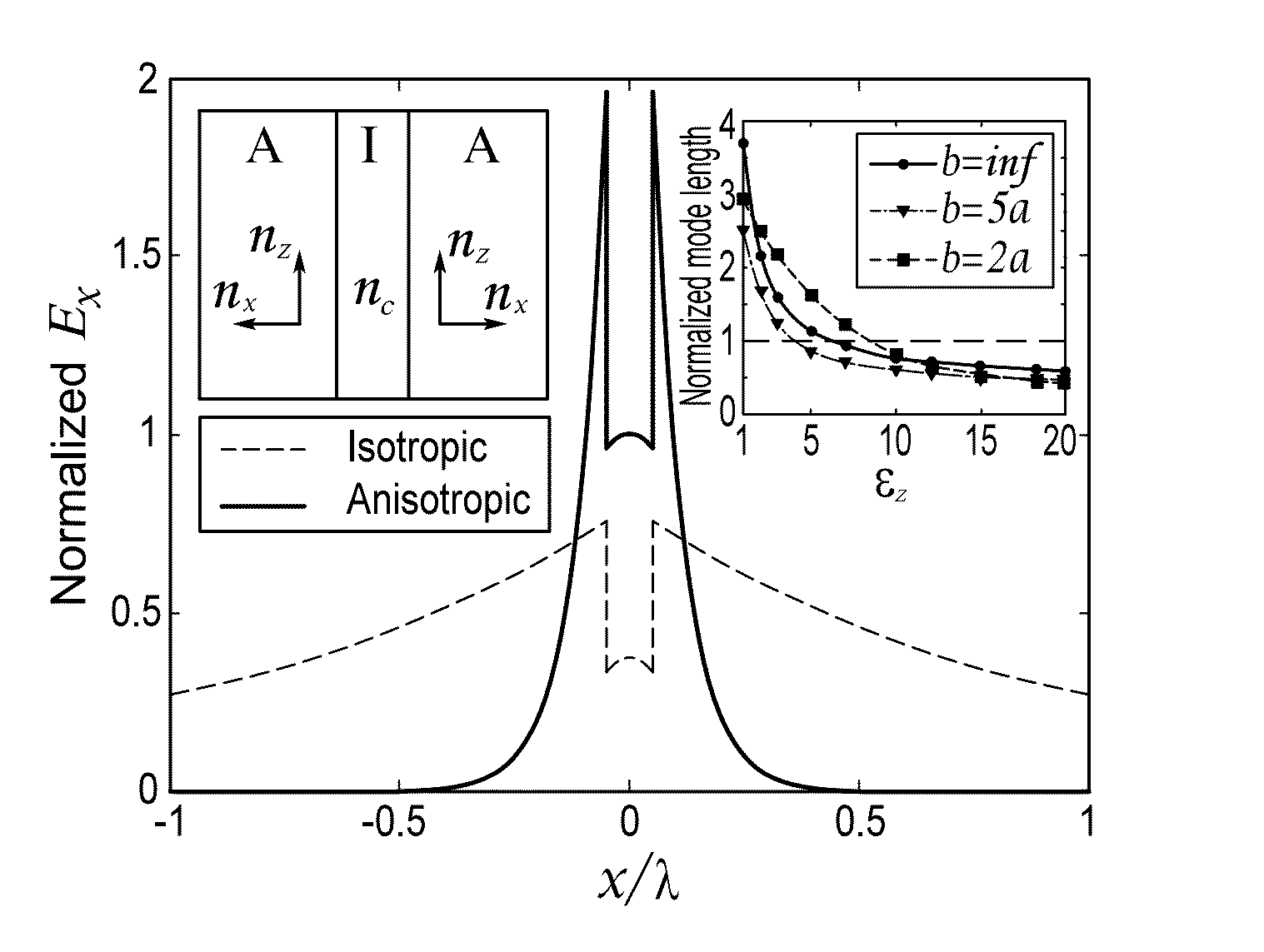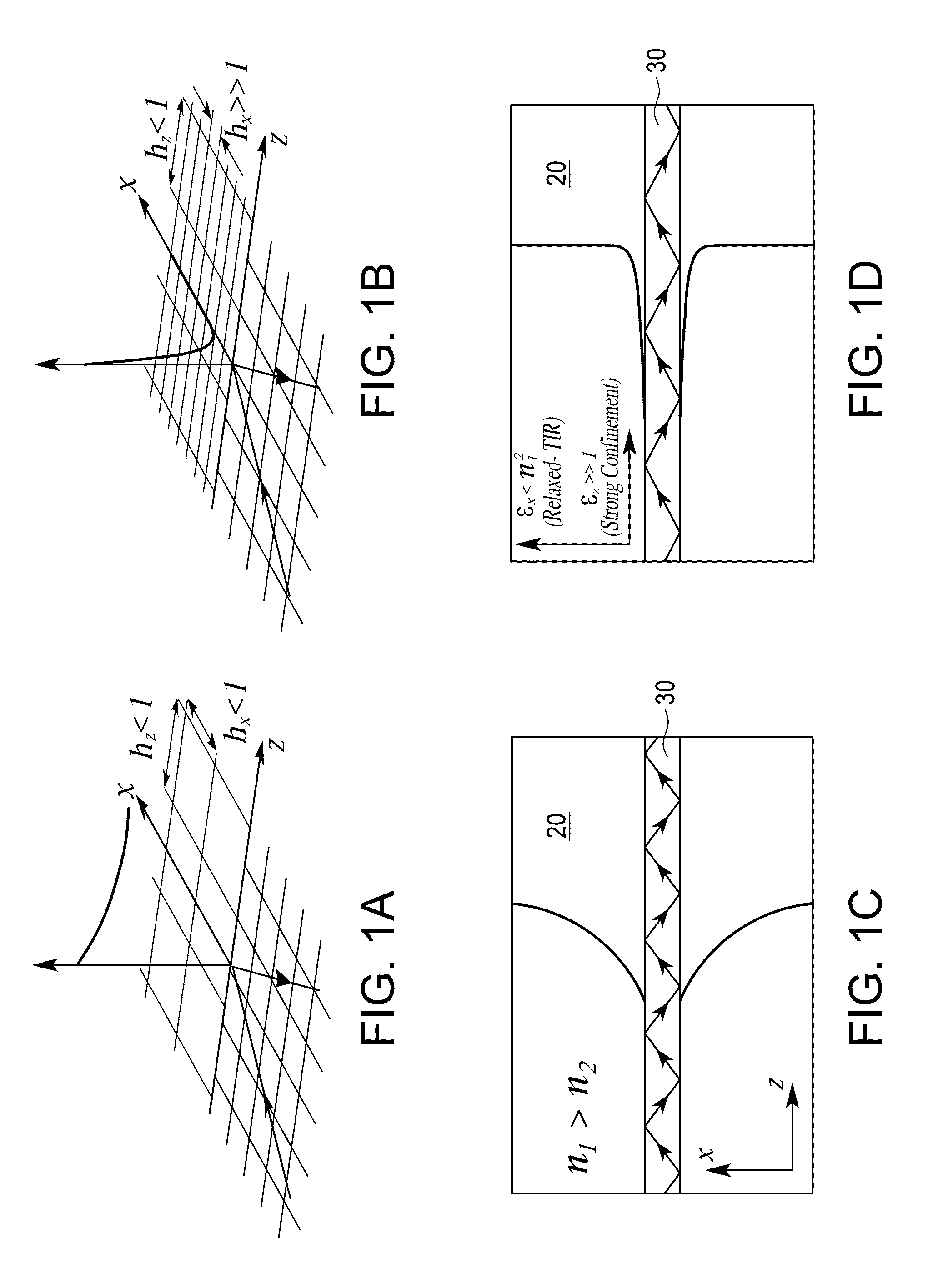Light confining devices using all-dielectric metamaterial cladding
a technology of dielectric metamaterials and confining devices, applied in the field of optical light confining devices, can solve the problems of reducing the propagation length, limiting the size of all conventional optical devices, and high power consumption, so as to reduce cross-talk, reduce the energy transfer between devices, and increase the spontaneous emission rate of an emitter
- Summary
- Abstract
- Description
- Claims
- Application Information
AI Technical Summary
Benefits of technology
Problems solved by technology
Method used
Image
Examples
Embodiment Construction
[0038]An optical waveguide having a cladding composed of all-dielectric metamaterials is provided.
[0039]All-dielectric waveguides are useful for low-loss confinement of electromagnetic waves at optical frequencies, e.g. slot waveguides and photonic crystal waveguides. Slot waveguides can confine and enhance the electric field inside a sub-diffraction low-index dielectric slot between high index waveguides, which is suitable for many applications, such as nonlinear and quantum optics. The enhancement in the slot arises due to the continuity condition on the displacement vector at the low-index / high-index interface. However, most of the power lies outside the slot region and decays slowly. Thus, the slot waveguide performance in a dense Photonic Integrated Circuit (“PIC”) is not comparable to a conventional rod waveguide due to crosstalk.
[0040]The light confinement mechanism in Photonic crystal (“PhC”) waveguides is the bragg reflection of waves in the bandgap of the PhC. The properti...
PUM
 Login to View More
Login to View More Abstract
Description
Claims
Application Information
 Login to View More
Login to View More - R&D
- Intellectual Property
- Life Sciences
- Materials
- Tech Scout
- Unparalleled Data Quality
- Higher Quality Content
- 60% Fewer Hallucinations
Browse by: Latest US Patents, China's latest patents, Technical Efficacy Thesaurus, Application Domain, Technology Topic, Popular Technical Reports.
© 2025 PatSnap. All rights reserved.Legal|Privacy policy|Modern Slavery Act Transparency Statement|Sitemap|About US| Contact US: help@patsnap.com



